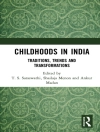This volume explores the world of grassroots organizations and outlines their history while differentiating them from the more familiar paid-staff nonprofit organizations. David Horton Smith, a leading scholar on the nonprofit and voluntary sector, examines the available empirical research on the topic and analyzes the theoretical concepts that have come to define such associations. He affords the reader a complete, detailed description of the nature and characteristics of grassroots organizations, their formation, structure, leadership, life cycle, effectiveness, and their integral role in postmodern societies.
Daftar Isi
PART ONE: TOWARD A ROUND-EARTH PARADIGM FOR THE VOLUNTARY NONPROFIT SECTOR
Definitions and Metaphors
Revising Flat-Earth Maps
The Rest of the Voluntary Nonprofit Sector
PART TWO: THE DISTINCTIVE NATURE OF GRASSROOTS ASSOCIATIONS
Formational Characteristics
Internal Guidance Systems
Internal Structure
Internal Processes
Leaders and Environments
Life Cycle Changes
Impact and Effectiveness
PART THREE: THEORETICAL PARADIGMS AND CONCLUSIONS
Flat-Earth Paradigms and the Round-Earth Paradigm in Outline
Some Conclusions and Forecasts
The Advent of
Homo Voluntas












